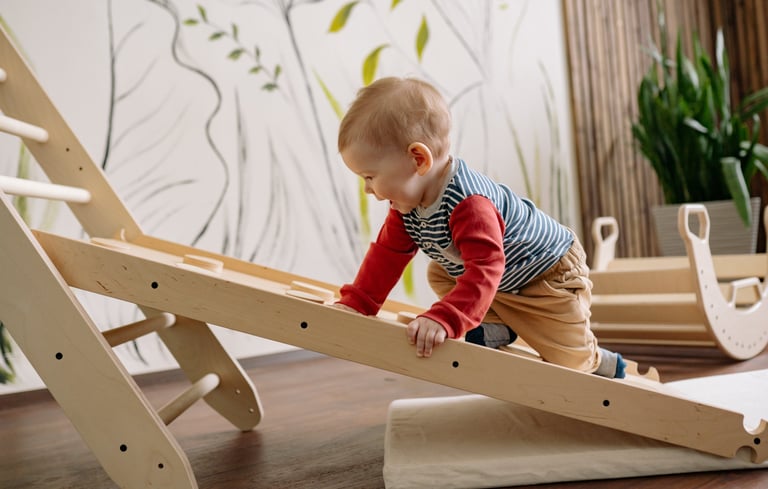
Approaches
Photo by Harrison Haines from Pexels
The Pikler Approach
The two main principles of the Pikler Approach are respectful care and complete freedom of movement. The heart of the approach is relationship.
The freedom of movement means that we don’t make the baby/child do a movement before he is ready for it and we don’t stimulate any movement in any way. ‘Each milestone of motor development is reached by the infant’s own initiative as a result of his own efforts’ (Anna Tardos).
Giving the child space and time for his exploration and creating an optimal environment for him to be able to move freely, following his own initiatives, nourishes his sense of balance and sense of movement.
The environment is optimal if the child has enough space to move in various ways. The objects are safe and simple so he can explore everything on his own without grown-up assistance or intervention. We don't comment on every single move of the child when he is engaged in his play but we are always nearby if he needs our support or encouragement.
When the child receives all the time that he needs for his own rhythm, he will explore further by himself. This is where the principle of gentle care connects to the principle of free and spontaneous play. When the child receives care that gives warmth and safety, he can explore the world.
The warmth inside that the child experiences through the care passes into the world in exploration. The interest that the child receives internally in care situations manifests as an interest in the outer world.
Respectful Care
Bodily care situations such as nappy changing, feeding, and changing clothes are considered the core activities throughout the day. The child can build a secure relationship with the parent through caregiving and establish a strong bond and trust.
This respectful and unrushed care nurtures the infant’s sense of touch and sense of life. The touch is always gentle with a kind gesture and a soft voice in the full presence of the caregiver. This undivided attention and gentleness make the child feel relaxed and confident. It creates a “psychological space, that optimizes the infant’s development”.
Freedom of Movement


Photo by Yan Krukov from Pexels
The Waldorf/Steiner Approach
The daily rhythm of a Waldorf setting gives security to children. They know exactly what activity comes next so they don’t have to be worried or stressed about the course of the day. Activities of the daily rhythm are planned carefully giving appropriate time to the children to ‘breathe in’ and ‘breathe out.’ The daily activities are purposeful and engaging so children can see the point of participating. Children are given the opportunity to solve their conflicts on their own and struggle a bit as this is a learning opportunity to develop social skills. Waldorf's approach uses puppetry and storytelling too to enhance the capacity of children and show them possible ways to resolve their conflicts.
Another important element of the approach is to create a healing and peaceful environment where grown-ups model the appropriate behaviour. Adults should be worthy to imitate so carers are very conscious of their behaviour, their tone of voice and their general attitude. We involve children in our everyday tasks of living. Grown-ups are always busy working on something meaningful around the children so they can imitate or join in the work.
Beauty and practicality are both essential in the Waldorf environment. Such an environment is especially crucial for a developing human being who just starts to discover the world around him. In these early years, children experience everything through their senses. Protecting the child's senses is a very important aspect when choosing elements that surround him. Neutral and warm colours and encircling and soft shapes are used. Toys are open-ended to encourage the child to use her imagination and play creatively and freely.


